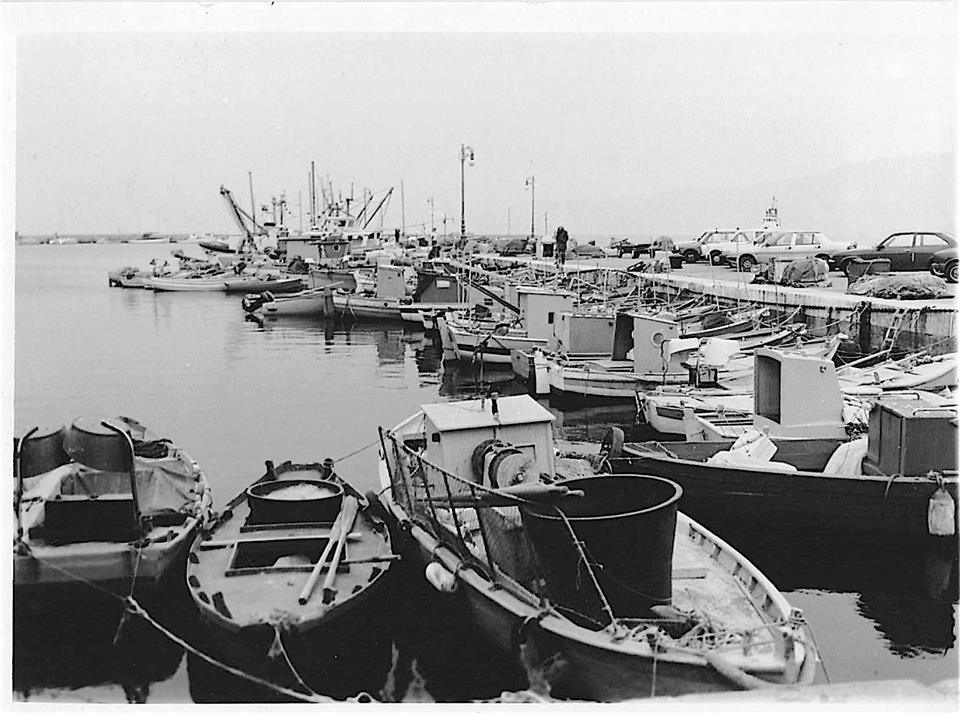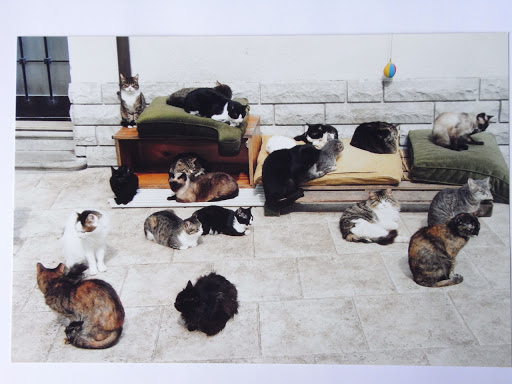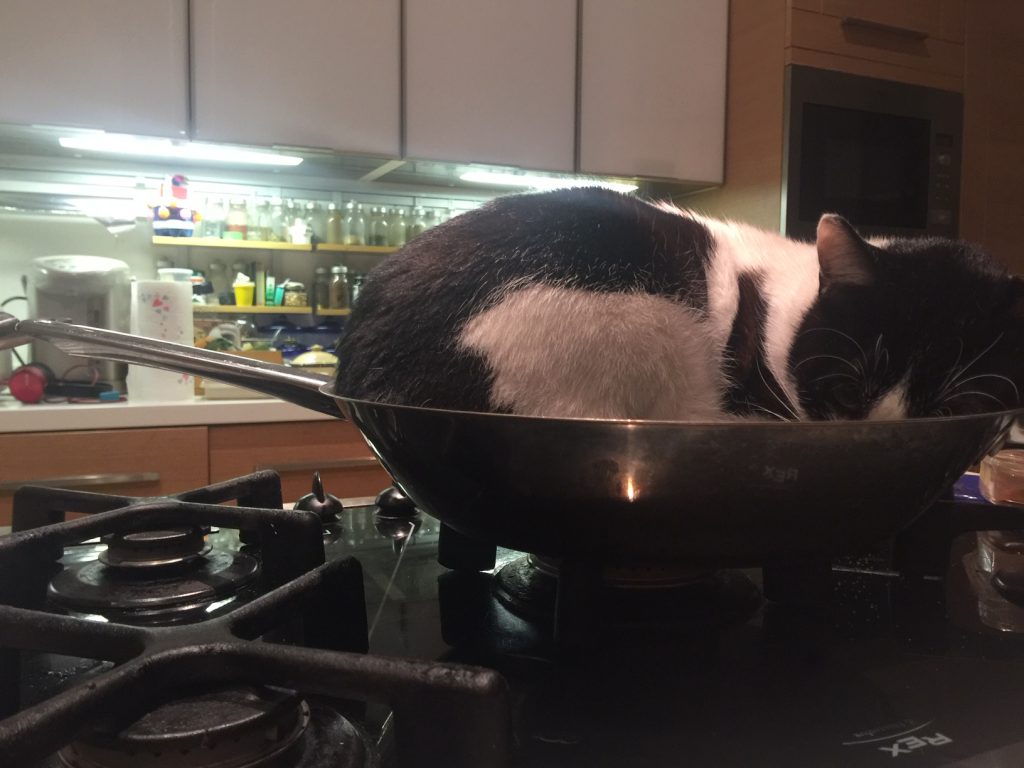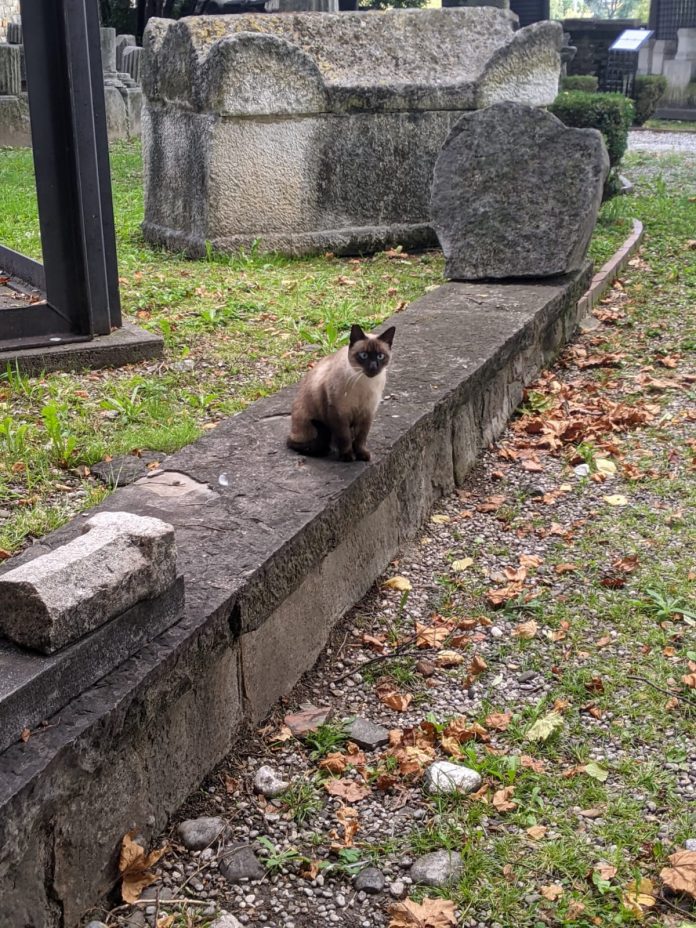By Alessandra Ressa
Like many Italian cities and towns, Trieste used to be a cat haven. Until just a few years ago, colonies of stray cats roamed free in many areas of town, lazily licking their paws next to monuments or in Cittavecchia’s alleys. Many of them inhabited the hollows of the Roman amphitheater. They also loved to hang around the Rive, where they waited for the fishermen to come back from a night at sea.
Not only the Rive, where the fishing boats moored, but the fish market – the beautiful former Pescheria building, now converted into an exposition hall, known as “Salone degli Incanti” – was quite an attraction for dozens of cats and seagulls, who waited patiently for leftovers at closing time.

Hundreds of cats lived on San Giusto hill. A famous colony of felines had its home inside Giardino Pubblico – Trieste’s only central public park – at the end of busy Via Battisti. Suburbs too were full of cats. It was quite common to spot female cats with their babies everywhere. And it was a busy time for Trieste’s firefighters, trying to retrieve kittens from cars’ engines, pipes, and other impossible places.
How did all these felines manage to survive in a heavily cementified city? They didn’t do it alone, there wouldn’t have been enough rats and garbage for all. To feed, cure, and check on them, there existed an army of “gattare”, old ladies who literally devoted their lives to the well-being of Trieste’s stray cats.
They built shelters, bought food and medicine with their own meager retirement money, had a register where all felines were recorded by name, area where they lived, age when possible, and even medical history. Thanks to the register, lost or injured cats were quickly identified and rescued. These tireless ladies often petitioned the municipality to obtain free care access for “their” cats.

As public transportation was replaced by an increasing numbers of cars (a recent study published in a local newspaper revealed that the average Trieste family of four owns two cars and a motorbike) Trieste became less safe for stray animals. Cats were often run over, and if they didn’t die immediately, were left to agonize in the streets. In addition, the “gattare” grew old and died, to be substituted by fewer and fewer volunteers.
To better control the expanding local cat population, and avoid many heart-breaking deadly accidents, a special cat shelter named Il Gattile was created in the mid-1990s. For its president, opera lover Giorgio Cociani, saving cats from the streets was a personal crusade.
Since then, stray cats have been rescued, cured, and sterilized by the shelter. Together with rocket scientist Margherita Hack, another cat-lover, and well-known Triestini, Cociani led the shelter until last September, when he was killed in a fall while hiking along the Strada Costiera. Trieste mourned, and is still mourning, its beloved “gattaro”.

Cociani was known and loved by all, and there was much concern over the future of Il Gattile, where more than 100 cats are still waiting to be adopted. Inexhaustible veterinarian, Doctor Jesùs Catalan, co-founder of the cat shelter has now taken the lead, while dozens of volunteers help each day. Il Gattile is a private structure and is entirely supported by donations.
Because of the decreased number of “gattare”, increased urbanization, and mass sterilization, stray cats have become a rarity in Trieste today. Kittens almost a memory. Even so, the shelter continues to be overpopulated with cats that urgently need a home. Most of them are adult cats and the chances to be adopted are few – sadly, everybody wants kittens.

Cats are great companions, gentle and intelligent pets, easy to take care of, extremely clean and funny. They will keep you warm at night during cold, Bora stricken winters, and wake you up in the morning in time for you to enjoy sunrise.
If you have moved to Trieste and plan to live in this beautiful town, your move will not be entirely permanent until you adopt a cat. Mind you, buying a fancy, expensive one won’t do the trick. And did you know, not counting the adoration that ancient Egyptians had for cats, to the point that they buried them like kings, many illustrious historical personages had a beloved cat or two? Some of them were full-on crazy cat people, filling their homes with felines, far preferring their companionship to that of humans.

Probably inspired by Trieste’s cats during his long permanence in town, James Joyce wrote two children’s books starring the clever felines. Although we have no proof he actually visited Trieste (but having been just about everywhere we can’t exclude it a priori) Mark Twain was probably the greatest “gattaro” of them all. At some point he had 19 cats, all of whom he loved and cherished far beyond whatever he may have felt about people. “If man could be crossed with the cat,” he said, “it would improve man, but it would deteriorate the cat.”

Every year, more than 1,200 cats pass through Il Gattile. Undoubtedly, there must be at least one to make you happy. Go and check them out in Via Fontana, a tiny alley next to the courthouse, just off Via Fabio Severo. What better gift is there for yourself and your family for Christmas?






























I can remember coming from Australia as a 10 y.o and visiting my grandmother and aunts in the 70’s. My mother who immigrated from Trieste to Australia in the 50’s, was mad about cats. A typical Triestini you might say.
My biggest memory was visiting Teatro Romano with my aunt and at the time it was full of cats. These days, you’d be lucky to see 2 or 3 cats in the amphitheater.
I immigrated to Trieste in 2013. Sadly, I am currently not there due to the pandemic. However, not far from my home there are still some ‘gattare’ looking after stray cats in Via Belpoggio. If you Google this street, you can see the cat boxes that have been placed there.
https://www.google.it/maps/place/Via+Belpoggio,+13,+34123+Trieste+TS/@45.64404,13.7605461,3a,15y,181.79h,77t/data=!3m6!1e1!3m4!1sH9vzAx5QWsJsqUtAQJPwXA!2e0!7i16384!8i8192!4m5!3m4!1s0x477b6b7807665b75:0xb3fa2b66e7ca6cad!8m2!3d45.6441261!4d13.7605502
Thank you for the story as it brought back many childhood memories.